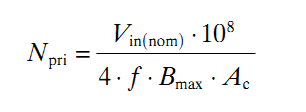Peugeot Streamliner: 1936 Andreau
Something of an exception was the Peugeot "Andreau" -- named after the aerodynamicist -- revealed at the October 1936 Salon de l'Automobile in Paris.
Some background regarding it along with photos of a surviving example can be found here, and another treatment is here.
The Andreau was designed around the standard Peugeot 402 production sedan that already featured a sleek, streamlined appearance for its time (the 402 was introduced at the 1935 Salon). Therefore, the proportions problem suggested above was largely avoided. Theoretically the Peugeot-sponsored design might have become a production car due to its 402 basis.
I rather like the Andreau's design -- with one glaring exception: its tail fin, as might be gleaned from the images below. Since I don't have Photoshop software, please try to image the cars pictured without their tail fins.
I also wonder if the tail fins were really that necessary. Cars of the 1930s had low top speeds by today's standards. Partly that was because of engineering limitations. Another factor was that roads were almost entirely two-lane affairs that went through most villages and towns along the way -- this tended to place practical limits on top speeds. So aside from stunts such as Bentleys racing the Train Bleu from Marseille to the Channel, Andreaus would seldom reach speeds where the tail fin would be advantageous. Otherwise, the tail fin would simply add to surface area and increase instability in cross-wind conditions.
The grille is standard Peugeot.
The flat outer surfaces of the front fenders seem odd, but were necessary to help limit body width and frontal profile that is an aerodynamic consideration.
Shaping of the lower tail could be modified in a production version. Note the odd, vertical bumper.
Two views of the Andreau at the 1936 Salon.
* * * * *
Below are two pages from the Automobilia Hors-serie No. 3 by René Bellu that deals with the Andreau. Click on the images to enlarge for better reading.










Comments
Post a Comment